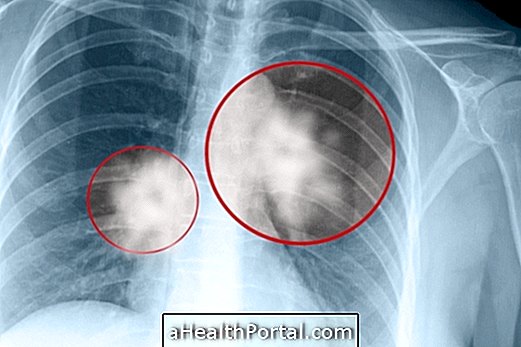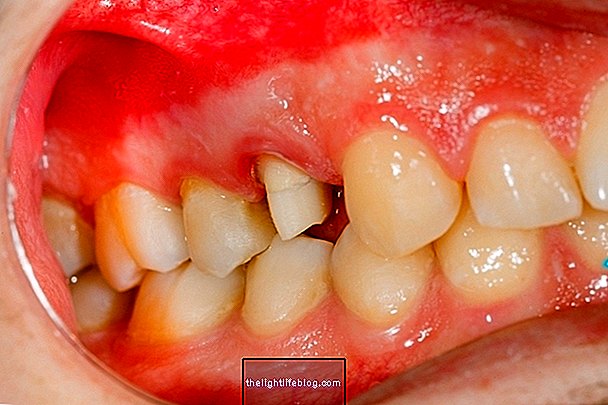The spot on the lung is usually a term used by the doctor to describe the presence of a white spot on the pulmonary X-ray, so the spot can have several causes.
Although lung cancer is always a possibility, it is quite rare and usually the spot is only a sign of infection or inflammation of the lung tissue. And even when it is caused by the growth of something inside the lung, it is usually a benign tumor, not being related to cancer.
Often, the spot on the x-ray may also be referred to as a lump in the lung, but in those cases, the doctor may already be suspicious of tissue growth, which may be benign or malignant. Understand more about the lump in the lung.

1. Lung infection
Infections are the main cause of lung spots, even if there is no active infection. That way, the white spot may appear on the X-ray after the person has had pneumonia or a tuberculosis, for example, representing a site in the lung where the tissues are still inflamed.
However, if there is no history of infection, the doctor should evaluate the presence of symptoms and take a catarrh examination to confirm if bacteria are developing in the lung.
Check out the main symptoms of lung infections such as pneumonia or tuberculosis.
2. Benign tumor
The benign tumor consists of the growth of tissue inside the lung, which normally does not cause any type of symptom and, therefore, is only discovered during routine exams. One of the most common types is fibroma, in which very rich fiber tissue develops in respiratory visas.
When the growth of this type of tumor is very exaggerated, it can cause changes in the breathing, but usually does not cause any type of symptom and, therefore, the treatment may not be necessary.
3. Malformation of blood vessels
Another possible cause of a small spot on the lung is the presence of a cluster of blood vessels in some region of the lung, known as a hemangioma. These vessels usually develop from birth, but as they usually do not cause any kind of symptom, they are only identified during routine exams. See more about what the hemangioma is and how it is treated.
The hemangioma is usually kept under surveillance only to see if it is increasing in size. If the size does not change, the doctor usually does not indicate any type of treatment, however, if it is growing and pressing the airways, surgery may be necessary to remove excess vessels, for example.
4. Lung cancer
Although it is more rare, lung cancer can also be one of the causes of lung spotting. Usually, in these cases, there may already be other signs such as persistent cough, shortness of breath, blood in the phlegm or chest pain, for example.
Lung cancer is more common in smokers, so if that is the case, your doctor may order other tests such as CT scan to try to confirm or miss the diagnosis of cancer.
See other signs that may help identify lung cancer.
What to do after discovering a spot on the lung
After identifying a lung spot on the x-ray, the doctor makes an assessment of the person's history to try to determine what the risk of being a more serious problem, such as cancer, may be. In addition, other tests such as computed tomography or even a biopsy may be done to try to better evaluate the type of tissue that is causing the blemish, allowing you to decide the best form of treatment.
With computed tomography, the doctor should be able to evaluate in more detail the size and shape of the spot, which may already indicate the risk of being cancer. Generally, very large and irregularly shaped spots are more likely to be cancer, but only one biopsy can confirm the diagnosis.






















